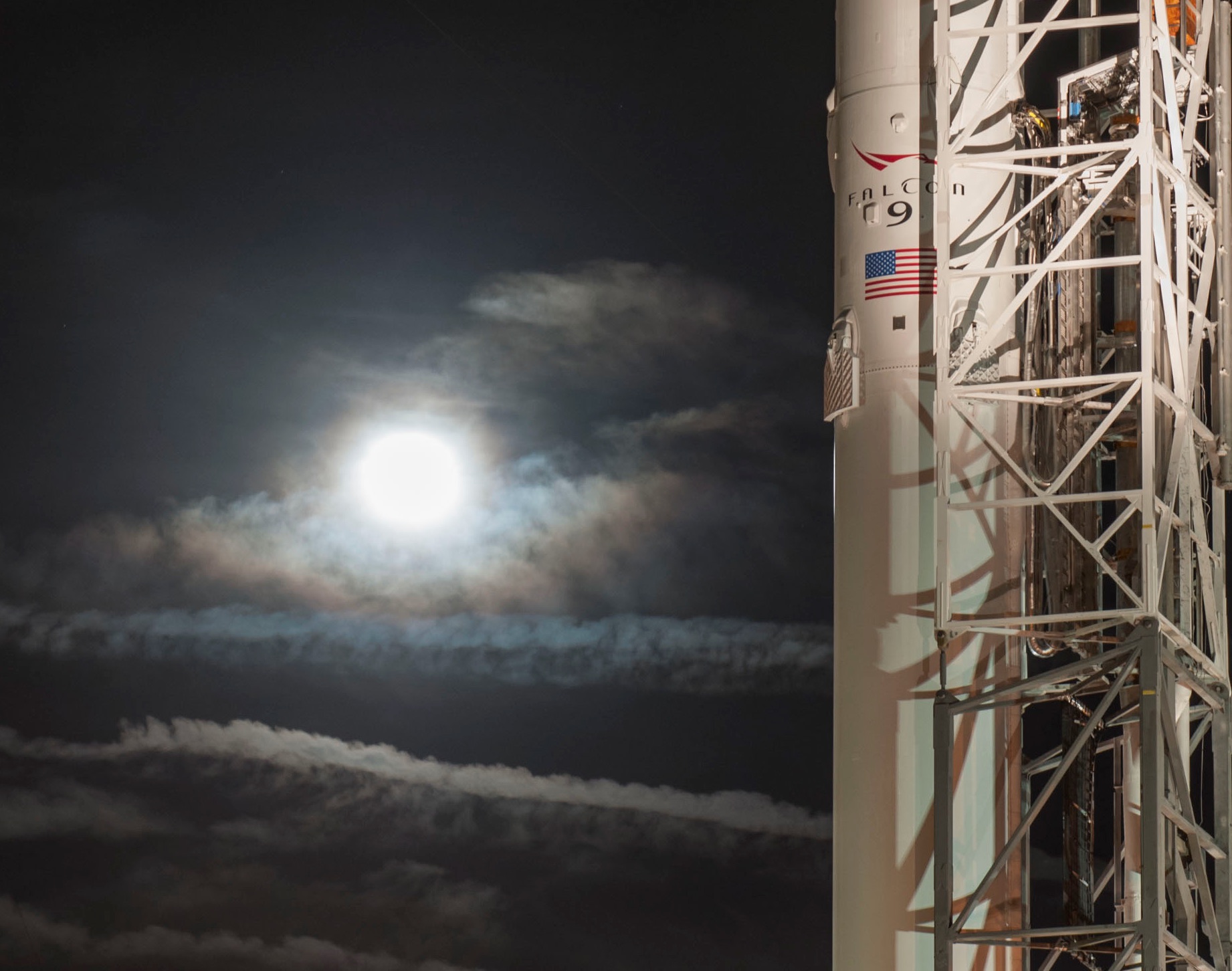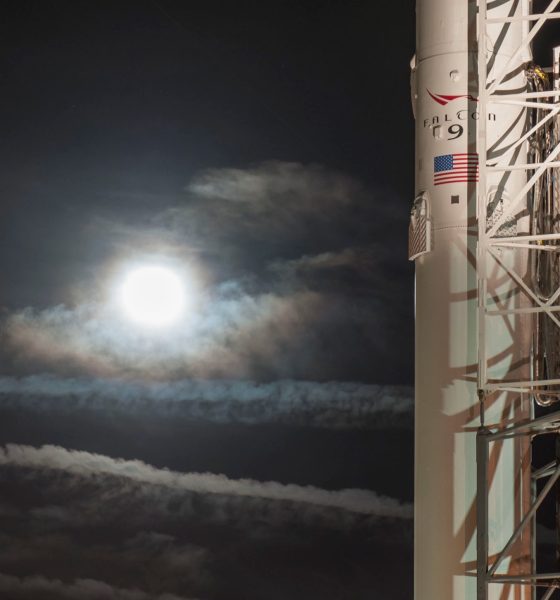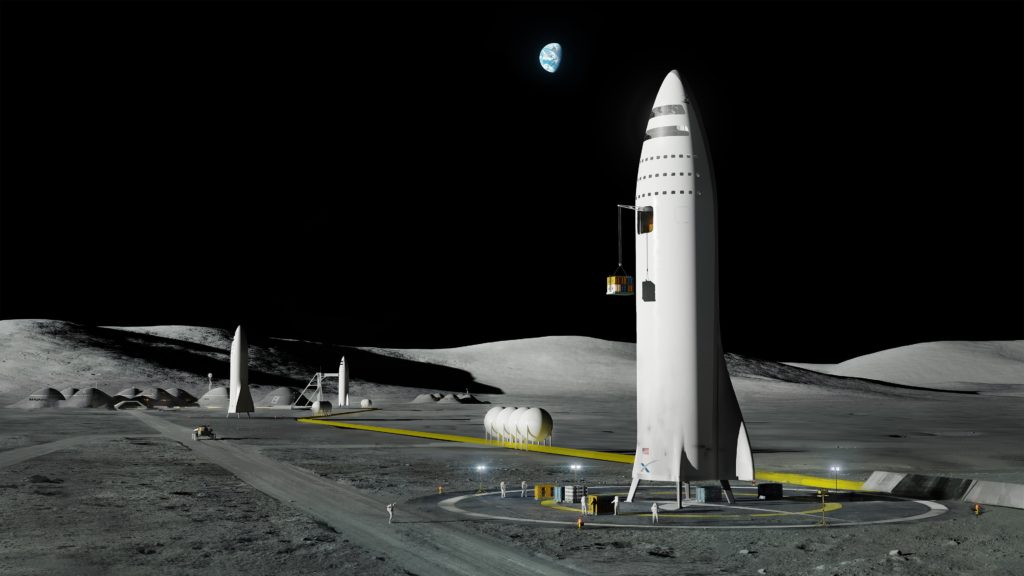

News
SpaceX talks Moon mission as strategic stepping stone for Mars colony
Josh Brost, Senior Director of SpaceX’s Government Business Development was in attendance at a civil spaceflight conference in Washington D.C. yesterday, January 18, and provided a number of interesting details about SpaceX’s upcoming activities in 2018. Perhaps most intriguingly, he reiterated SpaceX’s interest in enabling exploration of the Moon and Mars, while also clarifying that the upcoming Falcon 9 upgrade will be the last major change to the vehicle for the indefinite future.
Although the audience may have been more focused on SpaceX’s potential lunar prospects, Brost provided a vision similar to CEO Elon Musk’s common-knowledge goal of Martian (and interplanetary) colonization. This lunar focus was in part evidenced by a pointed question from an audience member that triggered Brost’s subsequent suggestion that the Moon could be a more logical starting place for the company as it ramps up its deep space efforts and gradually slips beyond Earth orbit. This strategic and calculated extension of the aspirations of the launch company’s famous founder is a rational attempt to position SpaceX in ways that allow the company to derive as much value as possible from the US government’s recently revived interest in returning the US and its astronauts to the Moon.
- SpaceX’s 2017 BFS (now Starship) delivers cargo to a large lunar base. (SpaceX)
- Starship and a Martian city, circa 2017. (SpaceX)
To a large extent, his comments mesh with the vision Elon Musk reiterated at 2017’s September IAC.
SpaceX’s next-generation heavy-lift rocket and spaceship (BFR and BFS) are being designed to carry 150 metric tons into low Earth orbit while still recovering both the first and second stages, and will be purpose-built for rapid and complete reusability. BFR and BFS are also being intentionally designed to be relatively destination-agnostic. In other words, BFS will be capable of transporting cargo and eventually crew to a number of destinations in the solar system, be it the Moon, Mars, or beyond. The outer planets are almost certainly off limits for crew due to the sheer length of any journey beyond the orbit of Mars, but BFR, as it was discussed last year, would be capable of transporting unprecedented amounts of cargo almost anywhere in the solar system. Reusability is, of course, paramount to SpaceX’s operational intent with BFR/BFS; unless a very lucrative offer is made, it is highly unlikely that SpaceX will even consider expendable missions, thus partially limiting what the next-gen vehicle will be capable of.
Still, it will be an incredibly capable rocket even with full reusability. Add in the potential promise of mature in-situ resource utilization (ISRU), more simply the production of methane and oxygen propellant at the destination, and it will open a hundred entirely new worlds to serious scientific, exploratory, and economic prospecting throughout the solar system.
What’s next?
The question, then, is “when?” While Brost did not specifically provide any sort of timeline for BFR, aside from a brief statement on its readiness in “a few years,” he did describe in some detail the imminent end of serious Falcon 9 upgrades. A continual stream of upgrades and modifications has been one of the only real constants with SpaceX’s Falcon 9 rocket: the original Falcon 9 is in almost every respect a completely different rocket when compared to the Falcon 9 Full Thrust (FT/1.2) of the present. However, one final leap is expected for Falcon 9, this time almost exclusively intended to improve the vehicle’s reliability and reusability as SpaceX rapidly approaches its first flights of Crew Dragon and dreams of rapid and repeated booster reuse.
While it was a small detail in an obscure sentence of one of several hour-long discussions, Brost specifically stated this:
Brost: with Block 5, goal it to lock down the design and fly the vehicle at very high flight rates. Innovation will focus on designing and testing BFR.
— Jeff Foust (@jeff_foust) January 18, 2018
This is arguably the most exciting tidbit provided to us by SpaceX. While it was undeniably vague and rather less than crystal-clear, it can be interpreted as something like this: once Block 5 has been introduced and begun to fly and refly both regularly and successfully, the vast majority of SpaceX’s launch vehicle development expertise will begin to focus intensely on the development and testing of BFR and BFS.
Statements from just last week made by SpaceX President Gwynne Shotwell strengthen this intuitive leap considerably, because BFR and BFS are liable to require a considerable amount of attention as they proceed through design maturation and eventually begin physical hardware testing in Texas.
Shotwell’s comments implied that SpaceX’s Boca Chica launch facilities, currently under construction, would be ready to support “vehicle tests” as early as late 2018/early 2019. Comments from earlier in 2017 indicate that SpaceX (and Shotwell) perceive Boca Chica as a near-perfect location for BFR launches (and thus BFR testing, as well). Finally, Brost’s implication that SpaceX’s exceptional team of brilliant and innovative launch vehicle engineers would be refocused on BFR soon after Block 5 was stable also meshes with this rough timeline. If Falcon 9 Block 5 does indeed debut within the “next few months” as Brost stated, it will have likely reached some level of design and operational maturity by the end of 2018, assuming SpaceX’s expected launch cadence.
- SpaceX’s Falcon 9 ahead of the launch of Zuma. (Tom Cross/Teslarati)
- A Falcon 9 lifts off from LC-40 carrying the highly secretive Zuma spacecraft. Hispasat 30W will launch from the same pad in just a few days. (Tom Cross)
- Falcon 9 1035 conducts its second landing after successfully launching CRS-13 on December 15. Improved reusability will be a huge focus of SpaceX in 2018. (NASA)
As of right now, SpaceX is already looking at a very busy February, and currently has as many as three commercial launches scheduled within a period of maybe three weeks (GovSat-1, PAZ, and Hispasat), maybe even four if Falcon Heavy completes its first static fire later this weekend. Musk estimated that SpaceX would complete 30 missions in 2018, and a cadence anywhere near three launches per month (let alone four) would easily push SpaceX past that goal and provide the company dozens of opportunities to test, launch, recover, and relaunch their new Block 5 version of Falcon 9. As such, while BFR is probably not going to reach fully integrated hardware development or testing in 2018, it is certainly a distinct possibility, and 2019 is far more promising for the company’s interplanetary aspirations.
For now, SpaceX’s 2018 focus is quite explicitly centered on ensuring the reliability of its Crew Dragon – set to debut NET August 2018 – and Falcon 9 as it strives to complete the development of both vehicles. Up next on the company’s busy schedule is another attempt at Falcon Heavy’s inaugural static fire on Saturday afternoon, as well as the flight-proven launch of GovSat-1/SES-16, currently NET January 30.
Follow along live as launch photographer Tom Cross and I cover these exciting proceedings live from both coasts.
Teslarati – Instagram – Twitter
Tom Cross – Instagram
Eric Ralph – Twitter

News
Tesla FSD fleet is nearing 7 billion total miles, including 2.5 billion city miles
As can be seen on Tesla’s official FSD webpage, vehicles equipped with the system have now navigated over 6.99 billion miles.

Tesla’s Full Self-Driving (Supervised) fleet is closing in on almost 7 billion total miles driven, as per data posted by the company on its official FSD webpage.
These figures hint at the massive scale of data fueling Tesla’s rapid FSD improvements, which have been quite notable as of late.
FSD mileage milestones
As can be seen on Tesla’s official FSD webpage, vehicles equipped with the system have now navigated over 6.99 billion miles. Tesla owner and avid FSD tester Whole Mars Catalog also shared a screenshot indicating that from the nearly 7 billion miles traveled by the FSD fleet, more than 2.5 billion miles were driven inside cities.
City miles are particularly valuable for complex urban scenarios like unprotected turns, pedestrian interactions, and traffic lights. This is also the difference-maker for FSD, as only complex solutions, such as Waymo’s self-driving taxis, operate similarly on inner-city streets. And even then, incidents such as the San Francisco blackouts have proven challenging for sensor-rich vehicles like Waymos.
Tesla’s data edge
Tesla has a number of advantages in the autonomous vehicle sector, one of which is the size of its fleet and the number of vehicles training FSD on real-world roads. Tesla’s nearly 7 billion FSD miles then allow the company to roll out updates that make its vehicles behave like they are being driven by experienced drivers, even if they are operating on their own.
So notable are Tesla’s improvements to FSD that NVIDIA Director of Robotics Jim Fan, after experiencing FSD v14, noted that the system is the first AI that passes what he described as a “Physical Turing Test.”
“Despite knowing exactly how robot learning works, I still find it magical watching the steering wheel turn by itself. First it feels surreal, next it becomes routine. Then, like the smartphone, taking it away actively hurts. This is how humanity gets rewired and glued to god-like technologies,” Fan wrote in a post on X.
News
Tesla starts showing how FSD will change lives in Europe
Local officials tested the system on narrow country roads and were impressed by FSD’s smooth, human-like driving, with some calling the service a game-changer for everyday life in areas that are far from urban centers.

Tesla has launched Europe’s first public shuttle service using Full Self-Driving (Supervised) in the rural Eifelkreis Bitburg-Prüm region of Germany, demonstrating how the technology can restore independence and mobility for people who struggle with limited transport options.
Local officials tested the system on narrow country roads and were impressed by FSD’s smooth, human-like driving, with some calling the service a game-changer for everyday life in areas that are far from urban centers.
Officials see real impact on rural residents
Arzfeld Mayor Johannes Kuhl and District Administrator Andreas Kruppert personally tested the Tesla shuttle service. This allowed them to see just how well FSD navigated winding lanes and rural roads confidently. Kruppert said, “Autonomous driving sounds like science fiction to many, but we simply see here that it works totally well in rural regions too.” Kuhl, for his part, also noted that FSD “feels like a very experienced driver.”
The pilot complements the area’s “Citizen Bus” program, which provides on-demand rides for elderly residents who can no longer drive themselves. Tesla Europe shared a video of a demonstration of the service, highlighting how FSD gives people their freedom back, even in places where public transport is not as prevalent.
What the Ministry for Economic Affairs and Transport says
Rhineland-Palatinate’s Minister Daniela Schmitt supported the project, praising the collaboration that made this “first of its kind in Europe” possible. As per the ministry, the rural rollout for the service shows FSD’s potential beyond major cities, and it delivers tangible benefits like grocery runs, doctor visits, and social connections for isolated residents.
“Reliable and flexible mobility is especially vital in rural areas. With the launch of a shuttle service using self-driving vehicles (FSD supervised) by Tesla in the Eifelkreis Bitburg-Prüm, an innovative pilot project is now getting underway that complements local community bus services. It is the first project of its kind in Europe.
“The result is a real gain for rural mobility: greater accessibility, more flexibility and tangible benefits for everyday life. A strong signal for innovation, cooperation and future-oriented mobility beyond urban centers,” the ministry wrote in a LinkedIn post.
News
Tesla China quietly posts Robotaxi-related job listing
Tesla China is currently seeking a Low Voltage Electrical Engineer to work on circuit board design for the company’s autonomous vehicles.

Tesla has posted a new job listing in Shanghai explicitly tied to its Robotaxi program, fueling speculation that the company is preparing to launch its dedicated autonomous ride-hailing service in China.
As noted in the listing, Tesla China is currently seeking a Low Voltage Electrical Engineer to work on circuit board design for the company’s autonomous vehicles.
Robotaxi-specific role
The listing, which was shared on social media platform X by industry watcher @tslaming, suggested that Tesla China is looking to fill the role urgently. The job listing itself specifically mentions that the person hired for the role will be working on the Low Voltage Hardware team, which would design the circuit boards that would serve as the nervous system of the Robotaxi.
Key tasks for the role, as indicated in the job listing, include collaboration with PCB layout, firmware, mechanical, program management, and validation teams, among other responsibilities. The role is based in Shanghai.
China Robotaxi launch
China represents a massive potential market for robotaxis, with its dense urban centers and supportive policies in select cities. Tesla has limited permission to roll out FSD in the country, though despite this, its vehicles have been hailed as among the best in the market when it comes to autonomous features. So far, at least, it appears that China supports Tesla’s FSD and Robotaxi rollout.
This was hinted at in November, when Tesla brought the Cybercab to the 8th China International Import Expo (CIIE) in Shanghai, marking the first time that the autonomous two-seater was brought to the Asia-Pacific region. The vehicle, despite not having a release date in China, received a significant amount of interest among the event’s attendees.














